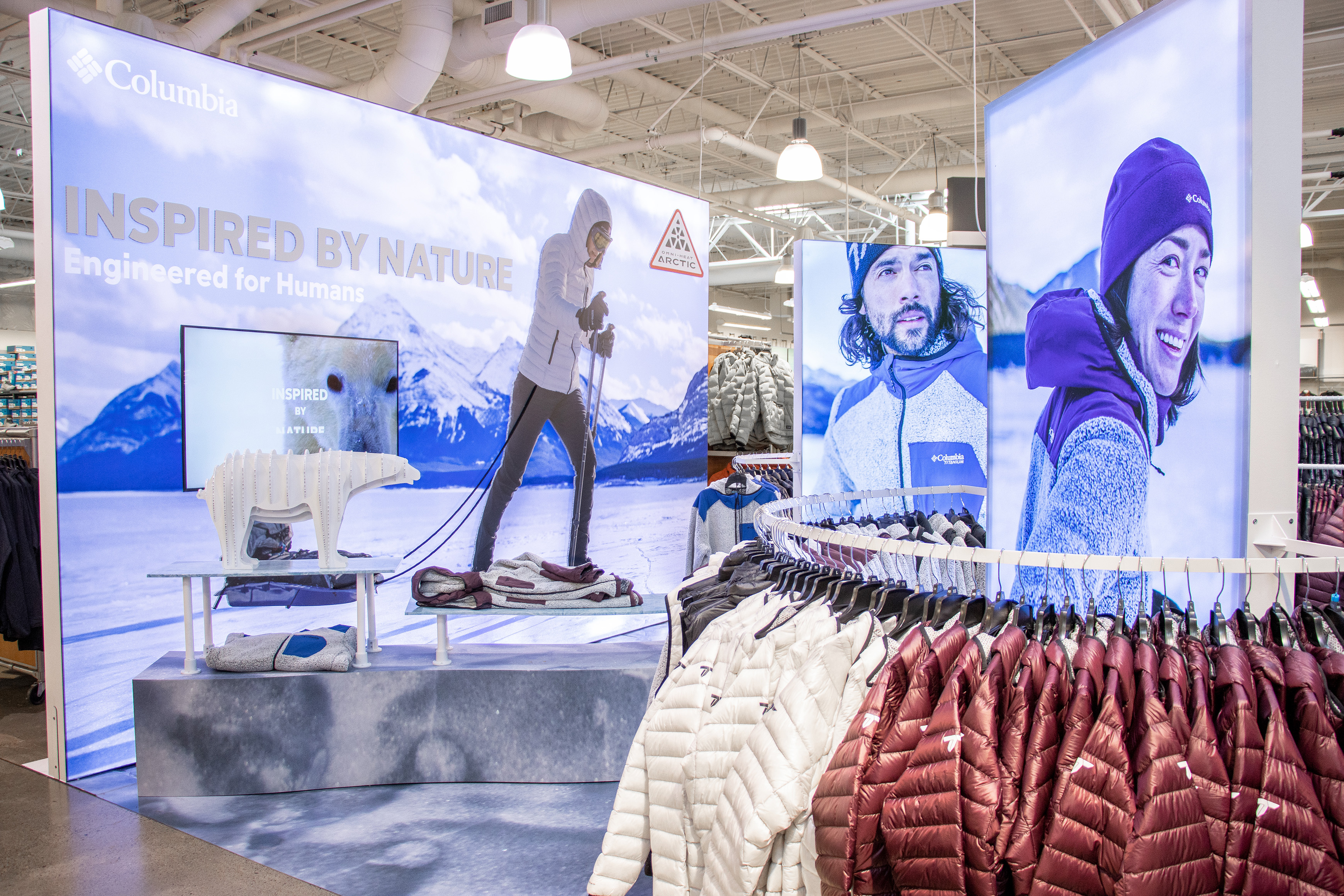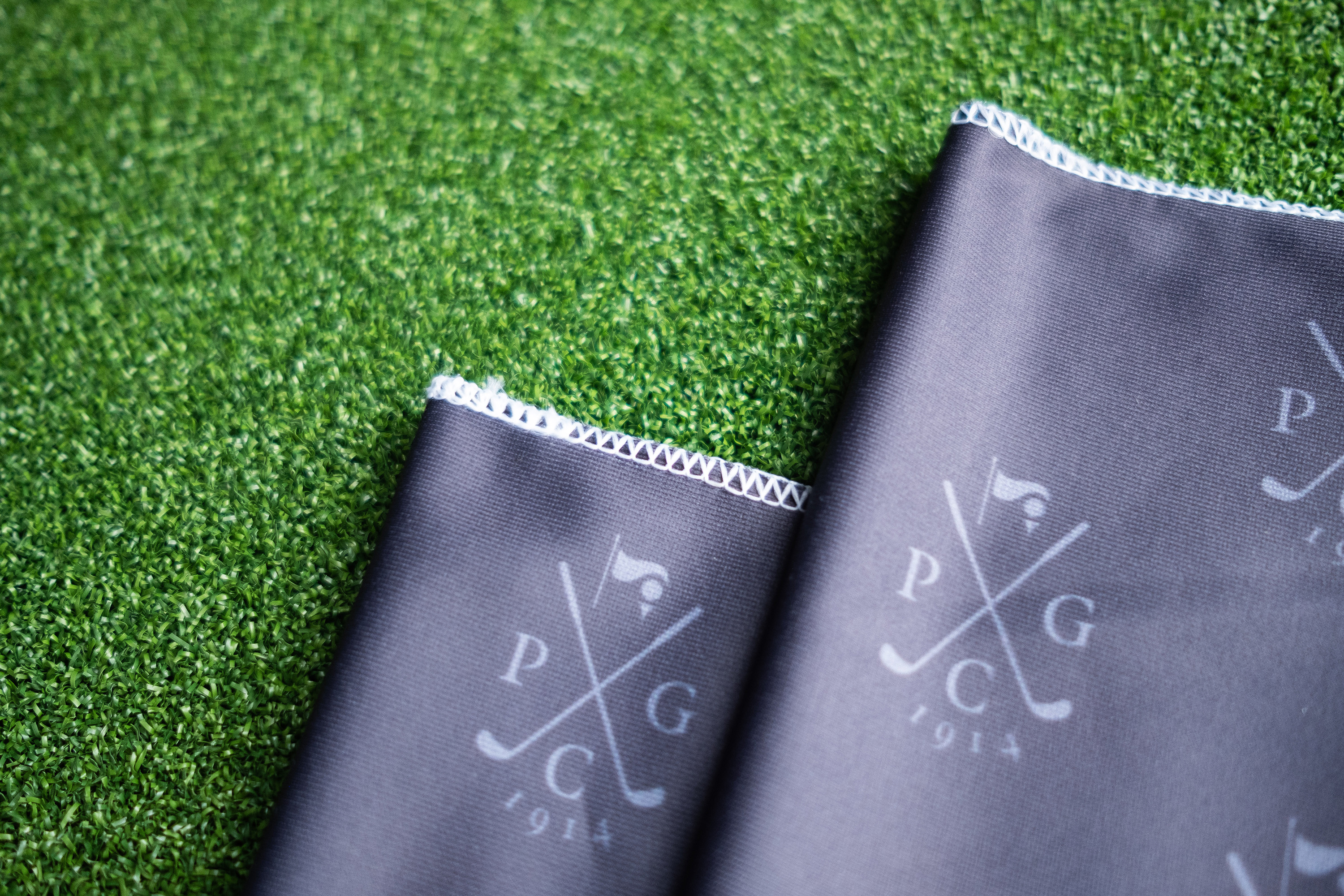
The Case for Dye-Sublimation Printing: When and Why You Should Utilize It
Dye-sublimation printing has revolutionized the production of fabric graphics, introducing vibrancy, durability, and customization to retail displays, commercial interiors, event signage, and more. Whether you’re familiar with the often-overlooked printing process or are reading about it for the first time, allow us to share the wonders of the highly versatile and underrated dye-sublimated fabric graphic. In this blog, we’ll break down what dye-sublimation is, the types of projects it’s best suited for, and the pros and cons of this large-format printing method.
INTRODUCTION TO DYE-SUBLIMATION PRINTING
Dye-sublimation printing, also known as sublimation printing or dye-sub, is a large-format printing method that enables us to print directly onto fabric materials. Our Durst P5 TEX iSUB inkjet printer “jets” water-based inks (i.e., dyes) onto polyester fabrics. Then, we sublimate the fabric print by running it through a heat source. (Hence the name “dye-sublimation.”) The sublimation process opens the pores of the material, allowing the ink to penetrate and be sealed into the individual fabric fibers. The final product is a vivid and versatile fabric graphic.
HOW DYE-SUBLIMATION DIFFERS FROM OTHER PRINTING METHODS
Dye-sublimation is a fabric printing process. Unlike traditional UV printing methods, which lay ink on top of non-fabric materials, dye-sublimation turns the ink droplets into a gas that is absorbed directly into the fibers of the fabric. Because the dye lives within the fabric fibers rather than layered on top, this printing method results in finished graphics that feel smooth to the touch.
Sublimation printing is best suited to polyester-based fabrics. When heated, the polyester melts slightly, allowing the ink to seep into the pores of the material, creating an embedded and permanent image transfer. The closer the material is to 100% polyester, the clearer the printed image will be. (Graphics printed on natural fibers like cotton will blur and wash away when cleaned.)
That being said, while we are limited to polyester-based materials, you might be surprised by how versatile polyester fabrics can be. We stock a variety of options — each offering unique properties like stretchiness, translucency, weight, durability, velvet-plush, mesh, and canvas textures — that allow for substantial customization and versatility.
IDEAL APPLICATIONS
We utilize sublimation printing to produce a variety of soft signage products, but most frequently, silicone edge graphics (SEGs). SEGs are printed fabric graphics that have a silicone gasket sewn to its edges. The gasket is then installed into an aluminum frame system, which produces a tight-as-a-drum display graphic. Interior lights can be added into SEG frames to enhance the vibrancy of the dye-sublimated process, producing a glowing backlit showpiece.
In addition to SEGs, we also frequently print retail display graphics, event banners, exhibition displays, curtains, backdrops, marquees, flags, canvas fine art prints, and ceiling baffles or drops. We can also create custom fabric projects. Anything you could possibly imagine using a large piece of printed fabric for, we can bring to life.

PROS & CONS
Dye-sublimated fabric graphics are one of the most popular and versatile products we offer — and for good reason! Fabric graphics have a variety of inherent benefits with only few limitations.
Pros
Permanent & Durable — By infusing and sealing inks within the material’s fibers, sublimation printing creates permanent graphics that are resistant to fading, cracking, peeling, scratching. The innate flexibility of fabric materials is also a deterrent to wrinkles and creases, allowing for easy and stress-free transportation, installation, and storage.
Soft & Flexible — Because the dye becomes part of the material itself, fabric graphics maintain a soft, flexible feel rather than appearing stiff or coated. This results in vibrant images that stay smooth to the touch.
Vivid Colors & Sharp Details — Our dye-sublimation printer creates exceptionally vibrant and detailed graphics that maintain their brilliance through multiple washes. We can, depending on font and fabric choice, print text as small as 12pt while maintaining sharp clarity. This does not apply to mesh materials with an open, net-like structure that are designed to allow airflow and light shading.
Washable — When cleaned and maintained properly, fabric graphics have a long lifespan. Depending on whether you’d like to clean the entire graphic or just a small portion, there are several ways to clean fabric prints, including spot cleaning, steam cleaning, and machine washing. Our Graphic Cleaning, Care, and Maintenance guide outlines when to utilize each cleaning method and how to do so successfully.
Noise Abatement — One of the commercial-specific benefits of fabric graphics is their ability to absorb sound. When incorporated into otherwise hard, echoing, and open interior spaces, they can help reduce noise levels and provide a more pleasant environment. Curtains, ceiling baffles, and even custom furniture coverings can be created and installed in your space, all of which will help soften and control noise levels, allowing you to focus on the important conversations you’re having.
Lightweight & Foldable — Soft signage is extremely lightweight and can be folded into small shipping boxes. This facilitates fast and cost-effective delivery.
Changeable — Not only are fabric graphics easy to install, they’re also easy to change. In fact, after the initial Silicone Edge Graphic frame installation, many of our clients swap the same-size SEG fabric graphics themselves, saving time and money. Our How to Install Silicone Edge Graphics guide can walk you through that process.
Cons
Reduced Sustainability — The limitation of polyester-based materials means that there are fewer sustainable material options than are available for non-fabric printing projects. That being said, our standard front-lit and back-lit fabric is made from recycled water bottles.
Limited Outdoor Use — Fabric graphics are not weather resistant. They will absorb moisture and fade when exposed to prolonged UV light. They are also incompatible with laminates, which are frequently used as a layer of protection between outdoor graphics and the elements. For best results, we recommend that dye-sublimated fabric graphics be displayed indoors.
FINISHING TOUCHES
Dye-sublimation printing is just the first step — just about all our fabric graphics require finishing touches from our skilled in-house sewing team. To properly prepare your graphic for installation, we’ll need to know how it will be displayed. For example, banners typically need hemmed edges, pole-pockets, and hardware to hang from designated points on a structure. Silicone edge graphics, however, require a silicone gasket sewn along the edges and are often installed by our clients themselves. If you plan to replace a SEG on your own, we’ll send you detailed instructions so that you can follow a personalized step-by-step guide. These are just a few methods of finishing we often produce, but by no means are the only options. Talk with your project manager about the details of your project. If you don’t yet have one, reach out to get started.





